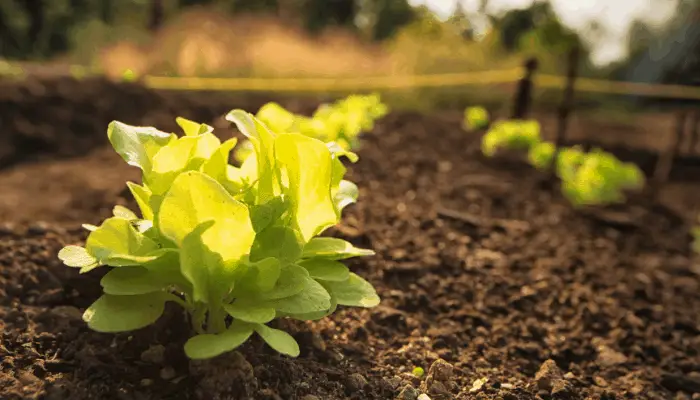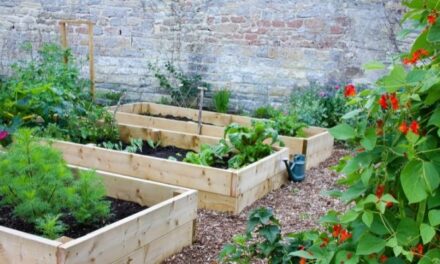Did you know that lettuce is one of the most highly planted vegetables in most United States’ gardens?
It’s simple to grow and doesn’t require a big area to thrive.
It is a fast grower and comes up earlier than many other veggies in your garden, allowing you to start enjoying your home-grown salads within as little as 30-70 days after planting.
But there are some plants that you should not plant beside lettuce if you want to grow it successfully.
Table of Contents
What Should You Not Plant Beside Lettuce?
You should not plant vegetables in the cabbage family, such as kale, cabbage, cauliflower, broccoli, and brussels sprouts beside lettuce because the plants in this family emit secretions from their roots which go into the soil and often interfere with the germination of your lettuce seeds.
Fennel should also not be planted next to your lettuce because it can prevent it from growing and may even kill it.
Calendula and chervil are two more plants that should be kept far away because they attract slugs which are one of the biggest threats to your lettuce crop.
Plan Your Garden In Advance

When plotting out how you’ll arrange your garden, keep in mind that lettuce does best with the right companions.
From other veggies to aromatic herbs and flowers, there are many companion plants that will thrive next to lettuce.
Some of the most common are:
- Carrots.
- Beets.
- Eggplant.
- Calendula.
- Chives.
- Chervil.
- Cilantro.
Some plants are well suited for sharing space with lettuce, but others can actually interfere with your lettuce plant’s health.
Most plants are good garden companions for lettuce, but knowing the few that could be harmful to your lettuce plants is essential in protecting your harvest.
Related Article: Is Growing Vegetables Near Trees a Good Idea?
What Should Not Be Planted With Lettuce?
Vegetables in the cabbage family, fennel, calendula, and chervil.
Simply put, they don’t make good neighbors for your lettuce.
Here are some plants that you shouldn’t plant nearby your lettuce crop.
Vegetables In The Cabbage Family
Kale, cauliflower, cabbage, brussels sprouts, and broccoli should keep their distance from your lettuce plants.
The plants in this family give off secretions from the roots.
These secretions get into the soil and can interfere with your lettuce seeds’ germination.
Fennel Is A Bad Companion Plant For Lettuce (or any other plant)
Fennel is offensive to most of the common plants in your garden, so if you do want to grow fennel, be sure and give it lots of space far from your other plants.
Fennel prevents most other plants from growing and sometimes even kills them.
Calendula And Chervil
It’s better to plant calendula or chervil a safe distance away from your lettuce rather than right next to it because they attract slugs.
Since slugs represent one of the biggest threats to your lettuce crop, planting some calendula or chervil in other parts of your garden can draw the bothersome slugs away from your lettuce, mitigating the risk.
The Best Companion Plants For Lettuce
There are many plants that make perfect companions for lettuce.
For example, basil can improve lettuce’s flavor while also repelling mosquitos and other bugs, making it a great neighbor for your lettuce.
Beets, carrots, onions, shallots, and radishes are good neighbors, too, because planting them alongside lettuce can maximize the efficiency of your garden space.
This is because lettuce plants grow above the soil and have shallow roots.
Beets, carrots, onions, shallots, and radishes grow their produce under the ground since they are root crops.
Planting them next to lettuce helps maximize your space.
Growing eggplants, melons, and squash nearby your lettuce can also help maximize your garden space.
Since lettuce is a fast grower and utilizes very little space, planting some slow growers that need a lot of space nearby makes for smart gardening.
Just about the time your lettuce is ready to harvest, the slower growing eggplants, melons, or squash will be prime to grow into their areas, preventing wasted space.
Cilantro is an aromatic herb that is a good citizen in your garden.
It can repel pesky insects that might do damage to your vegetables and it can also attract beneficial insects.
Placing the fragrant herb beside your lettuce plants is an easy and chemical-free way to deter harmful pests.
Protect Your Lettuce With A Barrier
A practical garden hack that will allow you to provide your lettuce some protection against aphids is to place plants that attract aphids around, but not right next to, your lettuce crop.
For example, chives and garlic make great barrier plants, so putting these between your rows of lettuce or surrounding your lettuce patch, can keep the dangerous aphids from getting to your lettuce.
Likewise, nasturtiums work the same way.
It might seem strange to locate an annual that produces beautiful flowers around your lettuce crop or between your rows of lettuce.
But doing so serves the same purpose because these flowers attract aphids and help pull them away from your lettuce and other vegetables.
It’s Easier When You Know What You Should Not Plant Beside Lettuce
Your lettuce crop can thrive and yield a harvest that will keep you loving your fresh, home-grown salads for months.
You can arrange your garden for optimal success by planting your lettuce near those plants that will be the best companions to support their growth and development.
Avoiding putting certain plants, like those in the cabbage family that send harmful secretions into the soil, too close to your lettuce is smart gardening.
Keeping fennel, which can be deadly to many plants away will help.
And planting insect-repelling plants and slug-attracting plants a strategic distance away is usually a good idea.




